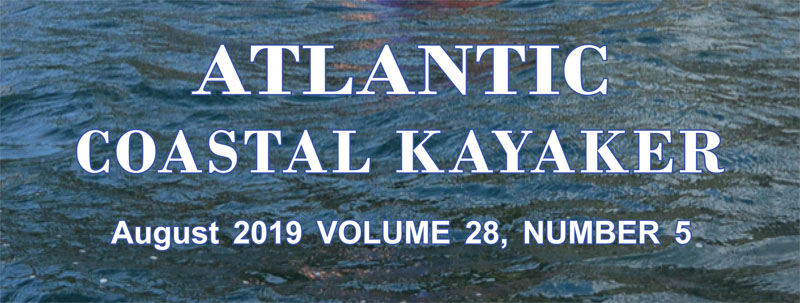|
|
Circumnavigating Jura, Scotland
By Kevin Mansell
Barnhill sits on the hillside looking across the Sound of Jura towards the Scottish mainland. Road access is not easy and it's normally two ferry journeys, although the Sound is only about five miles wide. It was to this remote location that George Orwell retreated to write his seminal work �1984� in the late 1940�s.
To the north lies the infamous Corryvreckan, a significant tidal race, which is the greatest challenge facing any kayaker paddling around Jura. With tidal streams running in excess of eight knots, the third largest whirlpool in the world, and waves reaching nine meters in height at times this is a passage that demands the utmost respect and should only be attempted at slack water on a day of settled weather. These do occur as shown by the fact that one-legged Bill Gunn, who was George Orwell�s brother-in-law, became the first person to swim across the Corryvreckan.
The complete circumnavigation of the Island is approximately 72 nautical miles, assuming that you launch from Tayvallich on the Scottish mainland. A delightful village with a shop, caf� with great cakes, a campsite and a pub. The easiest place to leave from is Carsaig Bay, just to the west of the village. Use the last of the flood tide to push you north as you cross the Sound of Jura, making landfall close to Barnhill, easily identifiable as the white house at the top of a green field.
|
|
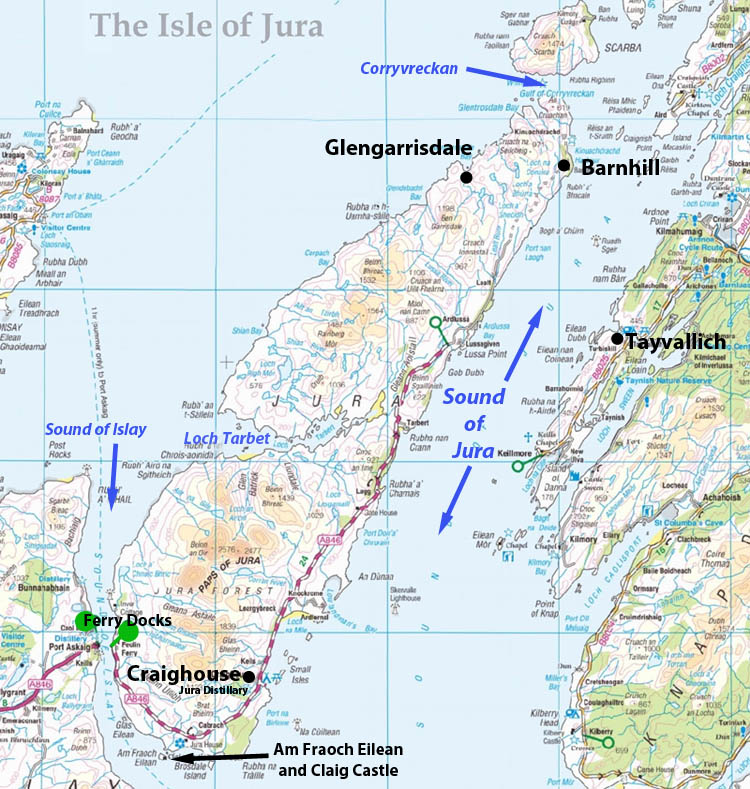
|
|
|
There are several places along here to pull ashore, grab a bite to eat, and await slack water in the Corryvreckan, so that you can sneak through onto the stunning west coast of Jura. A suitable destination on the first day is Glengarrisdale, a sheltered landing with the added luxury of a bothy.
Bothies are basic shelters (usually left unlocked and available for anyone to use free of charge - Ed) found mainly in the mountains of Scotland, but this one is just above sea level, so perfect for kayakers. Maintained by the Mountain Bothies Association, they are ideal for staying in while journeying through the more remote areas of the country.
|
|
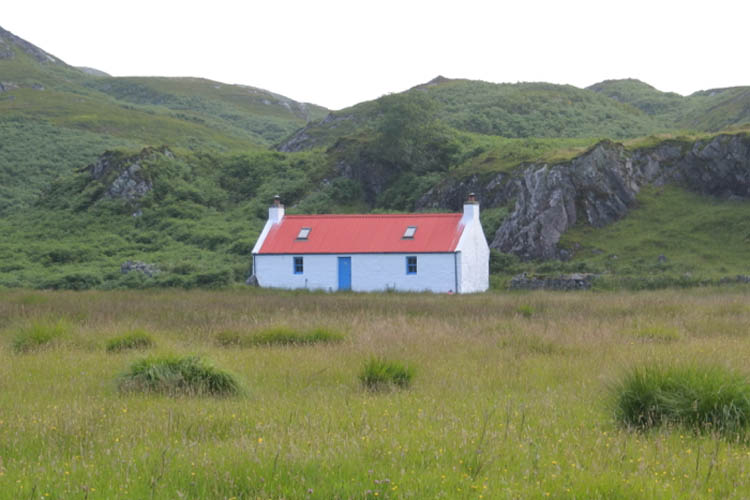
Glengarrisdale Bothy, a perfect place to stay on the north west coast of Jura.
|
|
|
As we landed on the beach, going through my mind was the fact Jura is supposed to have the highest density of adders, the UK�s only poisonous snake, in the United Kingdom. I had probably walked less than five meters before I saw my first adder so I retreated to the beach and replaced my crocs with my boots. In the 12 nights I have camped on Jura since, this turns out to be the only snake I have ever seen on the Island, so they are either remarkably shy or there aren�t as many as we originally thought.
We quickly became established in the bothy, which provided some protection against the infamous Scottish midge. As soon as the wind drops, which it does surprisingly frequently, during June, July, and August, the midges appear. It is hard to believe that something so small can make life intolerable when doing activities outside. A head net is an essential item of equipment when travelling in this area.
In addition to the Scottish midge there are numerous opportunities for observing wildlife while paddling around Jura. There is a very healthy population of red deer, which can frequently be seen high up on the ridges. The cattle wander down towards the sea shore so you will often hear them walking close to the tents in the middle of the night Fortunately I haven�t had my tent trampled on so far. The bird life is diverse with some rarer species such as the majestic White Tailed Eagle, probably the most memorable. Seals will be seen virtually every day and I have seen both bottlenose dolphins and porpoise, while paddling around Jura, always a thrill. Some species of whale and basking sharks might be seen, but I have only ever come across them further north in the Scottish Islands.
|
|
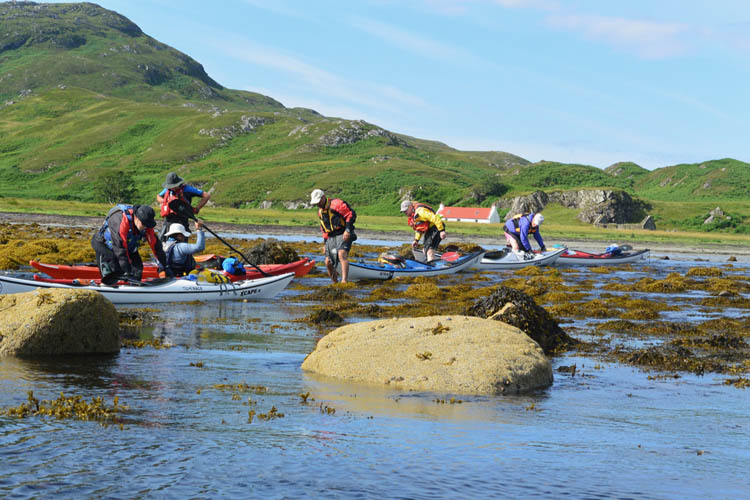
Launching after a night in Glengarrisdale Bothy. Normally we would be wearing more clothes than in this picture.
|
|
|
The landscape of the island is dominated by the Paps, three conical mountains, the highest of which reaches 2,575 feet. On a clear day, the Paps are visible from Northern Ireland, and I have seen them from the summit of Ben Nevis, nearly 100 miles north.
Jura is the 8th largest Scottish island, with an area of about 142 square miles, the majority of which are undeveloped wilderness. There is only one road, which runs from the ferry terminal on the west coast, through the only village, Craighouse, and part of the way along the east coast. Along this limited road system live the approximately 200 people who call Jura home. In 1831, 1,312 people lived on Jura, the Highland Clearances were still in the future. This was a traumatic period in Scottish history when people were forcibly replaced with sheep by the men of absentee landlords. The animals were seen as more profitable than people!
Western Jura is a long stretch of undeveloped coastline and is a perfect destination for the sea kayaker intent on exploring a wild, remote coast. It is also heaven for the physical geographer, the significant stretches of raised beaches are a clear indication of sea level change while numerous dykes stand proud as they run down the beach at right angles to the coast. They are formed from basalt, which is more resistant to erosion than the surrounding quartzite. A natural wind break, they are perfect to shelter behind at lunch time.
|
|

Typical scenery along the west coast of Jura.
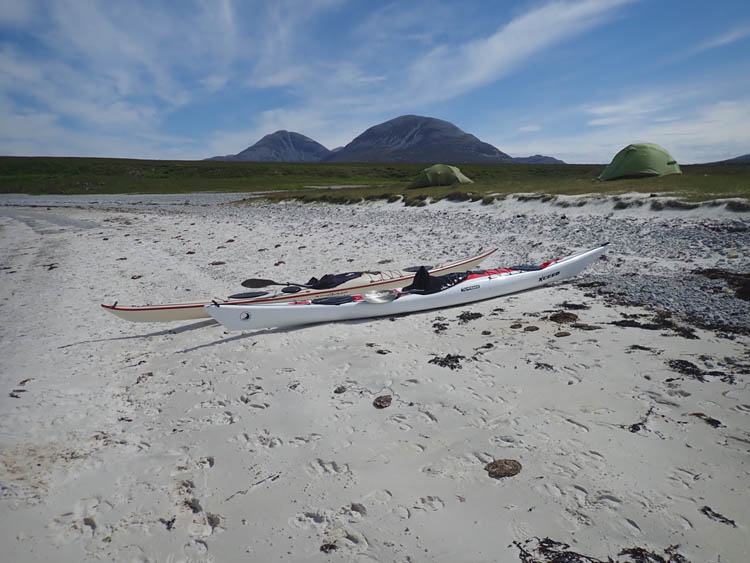
A delightful campsite on the west coast of Jura. We were stuck here for two days this June due to the strength of the winds. There are worse places to be stuck.
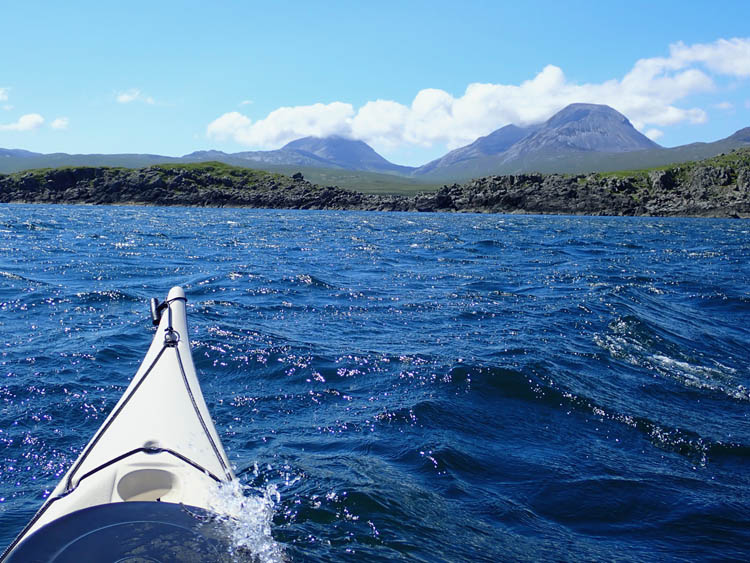
A view of the well-known Paps of Jura while crossing the Sound of Jura. The wind was increasing rapidly as this point.
|
|
|
Midway down the west coast is the significant inlet of Loch Tarbet, which almost divides the island in two. It provides plenty of sheltered waters to explore on days when the winds are blowing harder on the open coast. It is also possible to portage across from the west to the east coast of the island, a route that was used frequently in the past as a means of avoiding the strong tidal streams in the Corryvreckan to the north and the Sound of Islay to the south. I have never used this route, though, preferring the challenge of the tidal streams in the Sound of Islay and dramatic coastal scenery.
As soon as you start to head south from Loch Tarbert the channel starts to narrow. To the west lies the island of Islay, its northeastern point marked by the large lighthouse of Ruvaal. The tower is 34 meters high and is one of the many Scottish lighthouses, designed by members of the famous Stevenson family (of Robert Louis Stevenson). It indicates the entrance to the Sound of Islay, the narrow channel between Jura and Islay, which should only be attempted with favourable tidal streams. The streams in the Sound attain speeds of five knots on spring tides, so plan accordingly.
|
|
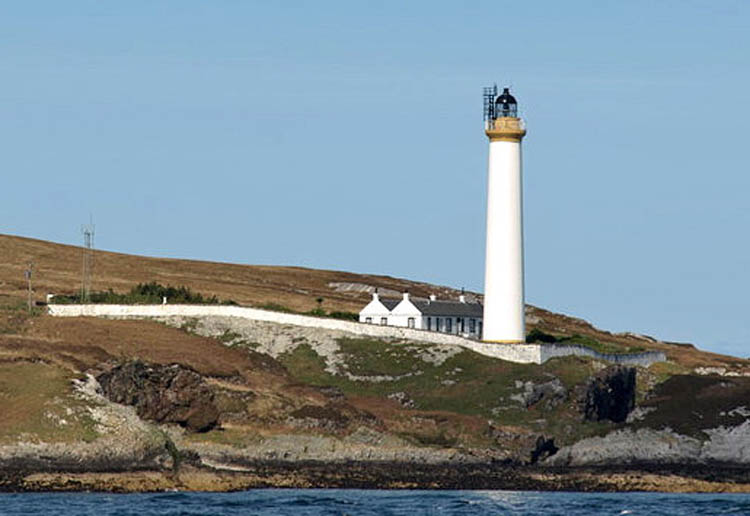
The Ruvaal Lighthouse on the Isle of Islay.
|
|
|
On the western shore, the Islay side, there are a couple of whiskey distilleries, which may tempt you ashore if time allows but I normally plan to land on one of the more remote beaches for lunch. That is the appeal of this area.
We took a much needed rest and lunch break and were amazed to see how the wind seemed to drop right off. Looking away to the Virginia shore, however, we could still see whitecaps where the three-mile fetch rolled up the water on the far side. All agreed that it was much better to be paddling easily along under a sheltering cliff and watching white caps than battling in them.
The small ferry, which joins Jura to Islay, crosses the Sound at Feolin. It is important to be aware of its movements as you approach as it probably has significantly less manoeuvrability that sea kayakers in the narrow channel with the fast moving tides.
|
|
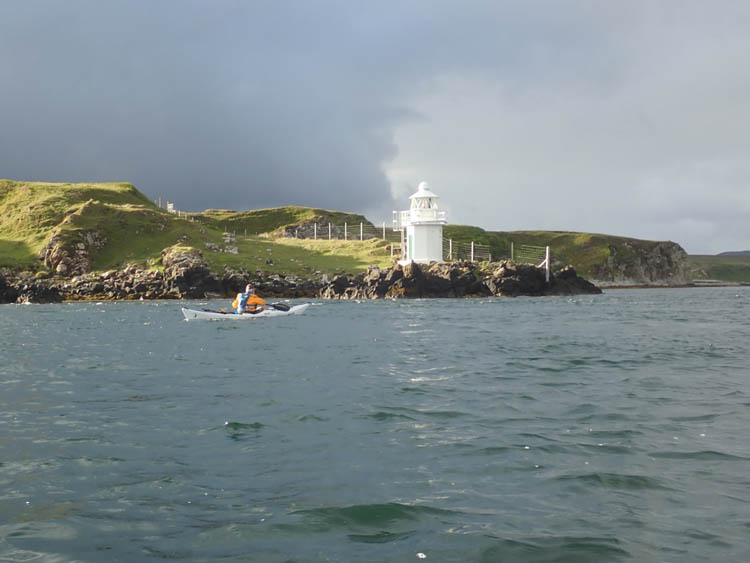
A small lighthouse in the Sound of Islay, just north of the ferry crossings, catching the early morning sunshine.
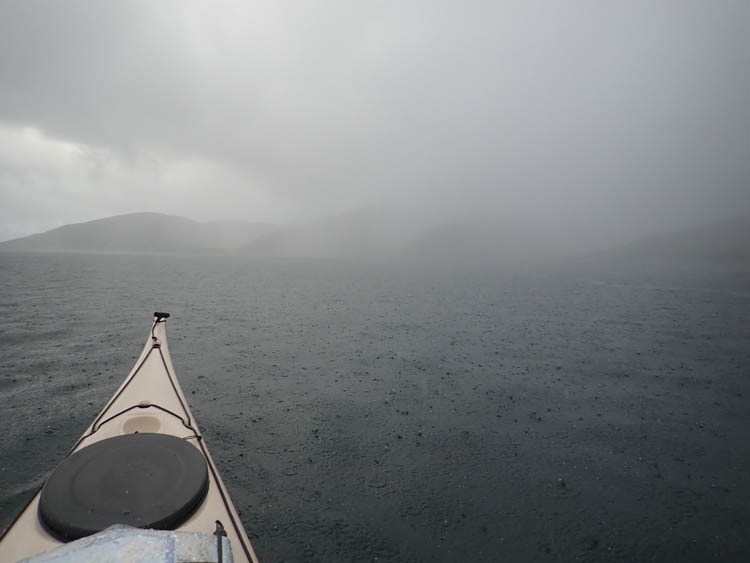
Heading south in the Sound of Islay. You can expect to experience weather like this on most kayaking trips in Scotland.
|
|
|
From the Sound of Islay the next destination is likely to be Craighouse, on the south east coast of Jura. The reefs off the south coast provide some delightful paddling. One of them, Am Fraoch Eilean, has the ruins of a castle on top, which was actually quite a challenge to climb up to. Claig Castle was probably built in the 15th century and was in a strategic position overlooking to two main shipping channels between the Mull of Kintyre and the Hebrides, the Sounds of Islay and Jura, both of which are paddled during the circumnavigation of Jura.
On a clear day it is possible to see the mountains of Arran, in the Firth of Clyde, rising above the Kintyre peninsula, tempting you with further Scottish adventures. What is certain is that it doesn't matter how often you visit Scotland, it is never enough. The possibilities are endless.
If you have planned your journey around the southern tip of Jura reasonably accurately, as you round the southeast corner of the island you should pick up the start of the north-going tide for a relatively easy paddle for the last few miles to Craighouse. Getting it wrong will turn it, potentially, into a hard slog. So if you plan to kayak in this area, obtain as much tidal information as possible and if you are uncertain about working with tides get in some practice before you leave home.
I always enjoy paddling into Craighouse, as it means I will have the opportunity to sort out equipment, restock the food, and have a warm shower and an enjoyable meal. The campsite is directly in front of the Jura Hotel on a large grassy area. The bar serves a wide variety of food, within easy walking, and is the ideal place to retreat to if the midges are proving to be problematic.
It's just a few meters from the campsite to the well known Jura Distillery, a must-visit venue for any sea kayaker with an interest in whiskey. It is also close to the islands only shop, which is surprisingly well stocked. If you fancy a break from paddling, Juracycles, recently established on the island, rents bikes, which are perfect for Jura's only road.
|
|
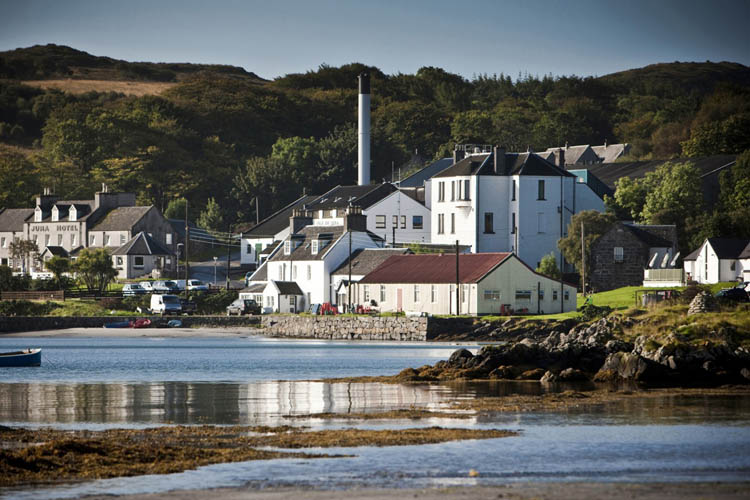
The Jura Distillery and village of Craighouse.
|
|
|
The Island has some superb wild walking, but make sure you are competent with map and compass as visibility can drop rapidly in the mountains. Our interest in all things George Orwell encouraged us to cycle to Barnhill. A great day out but be prepared for 50 miles of cycling and about 1,600 meters of ascent. You might need a couple of chocolate bars for energy and be aware there is no place to purchase refreshments, once you start your ride.
From Craighouse back to Carsaig Bay, the launching spot at Tayvallich, is just over 18 nautical miles. It involves heading north and crossing the Sound of Jura, but remember this is an area of swift moving tides so planning is essential. It you time your departure correctly it can be a pretty leisurely four-hour paddle or even a three-hour sprint on spring tides. What is certain is that as your kayak runs ashore on the small sandy beach you will have experienced some of the wildest scenery and remote kayaking that Scotland has to offer.
|
|
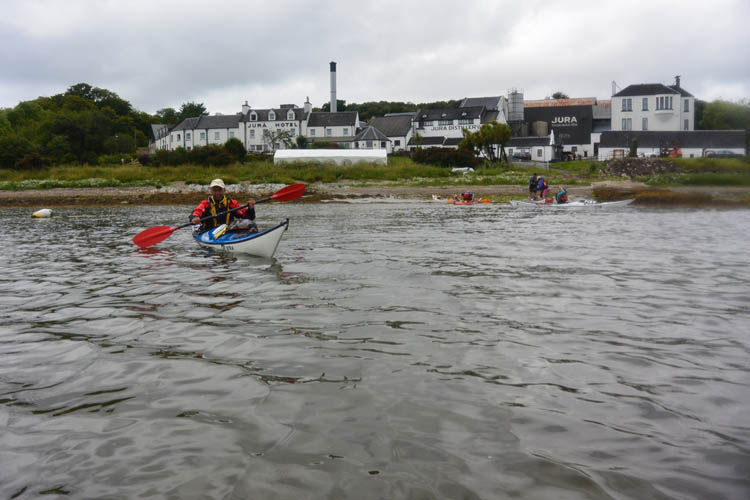
Leaving Craighouse, the only settlement on Jura. A lovely spot to camp with the opportunity to clean yourself and your kit.
|

|
Kevin Mansell: Although born in England, Kevin grew up on Jersey, an island he has called home since the mid 1960s. Kevin spent his working life as a school teacher. Kayaking has been an integral part of his life since he was given his first kayak in 1969. He has earned his A BC Level 5 Coach and has spent years exploring remote areas of the world, with his favorite areas being the west coast of Greenland and Baja. Retirement in 2016 has allowed him to spend even more time on the water. You can read about his kayaking journeys at www.seapaddler.co.uk.
|
|
|
Sea Kayaking Jura:
If you want to kayak in Scotland, the big draw is the Isle of Skye, with numerous outfitters and fabulous scenery. Skye is somewhat farther north than Jura, but more easily accessible. Skye is about five hours by car from either Glasgow or Edinburgh. Jura, while closer in a straight line, requires two ferry rides, one from the mainland to the Isle of Islay, and the other from Islay to Jura.
Some Outfitters offering trips to the western isles:
Clearwater Paddling
Kayak Wild Islay
Kayak Majik
Rockhopper Sea Kayaking
|
| | | | | | | | |
